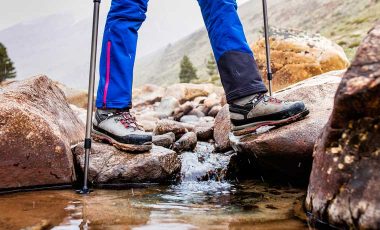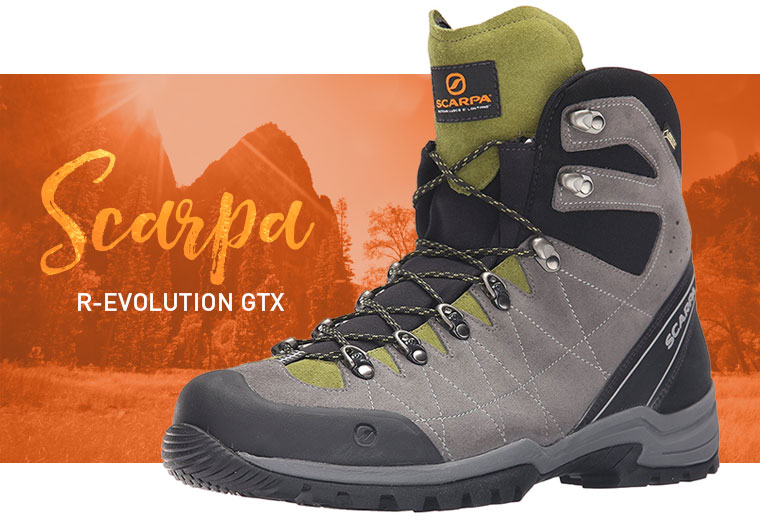Hiking boots have undergone quite a transformation since brands such as La Sportiva started making customised mountain-going footwear at the turn of the 19th century. These days, dozens of manufacturers combine the best of their knowledge, materials, expertise and cutting-edge technologies in a bid to ensure optimal performance in all conditions and on all terrains. Nevertheless, finding the best hiking boots for men who like to hike in all different conditions and terrains, isn’t as simple as swiping the most agreeable-looking item from the shelves. Numerous factors contribute to overall comfort, convenience and appropriateness in terms of desired use and application.
In this article we’re going to analyse the most important of these factors, taking into account the different styles of hiking, before delving into details of the best hiking boots for men currently on the market.
- The best hiking boots for men in 2024
- Parts of a hiking boot, explained (image)
- What to look for in the best hiking boots for men
Summary of the best hiking boots for men in 2024
Disclaimer: We use affiliate links and may receive a small commission on purchases.
This quick overview of the best hiking boots for men gives you a basic idea of which boots are leading the way in the trekking and hiking world, with more detailed info on each boot later in the article. And if you want to understand what to look for in a great pair of hiking boots then skip to the bottom section.
| Product | Best for | Weight (per pair) | Upper | Cost |
|---|---|---|---|---|
| Vivobarefoot Magna Trail | Barefoot-style hiking on moderate terrain | 670g | Recycled nylon | $$ |
| Keen NXIS EVO Waterproof Boots | Fast and light hiking, comfort | 836g | Synthetic with membrane | $ |
| Asolo Greenwood GV Hiking Boots | Mid weight for backpacking and trekking | 1134g | Perwanger leather + Gore-Tex | $$$ |
| Zamberlan Trail Lite EVO GTX Hiking Boots | Durable 3-season hiking and backpacking | 1105g | Nubuck + Gore-Tex | $$$ |
| HOKA Kaha 2 GTX Hiking Boots | Fast and light hiking, comfort | 1056g | Nubuck + Gore-Tex | $$ |
| Merrell Moab 3 Mid Waterproof Hiking Boots | 2-3 season backpacking and day hiking | 1020g | Pigskin leather + mesh | $ |
| AKU Tribute II LTR Hiking Boots | Everything! 3-4 season all rounder | 1219g | Full-grain leather | $$ |
| Scarpa R-Evolution GTX | Stability, summer hiking | 1316g | Suede + Gore-Tex | $$ |
| La Sportiva Trango S EVO | Everything! 3-4 season all rounder | 1250g | Mixed fabric + Gore-Tex | $$$ |
| Lowa Renegade GTX | Durable, 2-3 season trail hiking | 1110g | Nubuck + Gore-Tex | $$ |
The best hiking boots for men in 2024
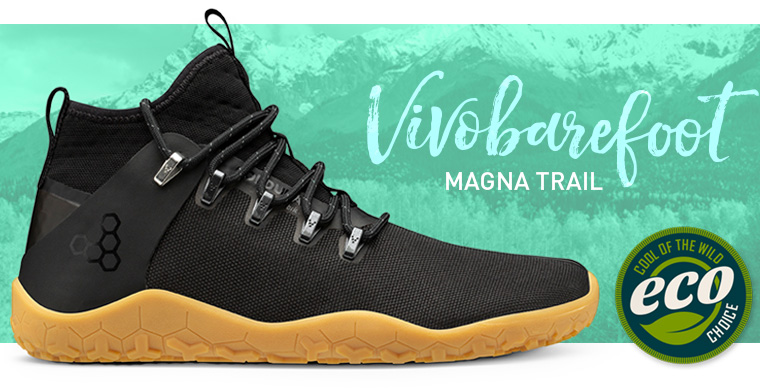

Vivobarefoot Magna Trail
For hikers who like to connect with the ground beneath their feet, the super lightweight Vivobarefoot Magna Trail is a durable, comfortable, and eco-friendly minimalist hiking boot. This model features a recycled microfibre heel lining and has 50% recycled PET in the webbing and laces.
Designed to be worn in moderate conditions, the Magna Trails also come with removable thermal insoles to make hiking in cold conditions more comfortable. 3mm lugs and a grippy sole provide sufficient traction on rocky trails, loose gravel and light mud. The main part of the boots is made from a highly breathable ECO Neoprene which hugs the foot like a sock. This provides barefoot-like comfort and flexibility whilst keeping dirt and stones out of the shoe. These are an ideal option for those wanting to move towards a more natural way of walking. And though they don’t provide the ankle support of more traditional hiking boots, they certainly promote the strengthening and development of muscles in your legs and feet.
For more information, read our full review of the Vivobarefoot Magna Trail boots.
Pros
- Suitable for use on mixed-terrain
- Comfortable fit
- Very lightweight and flexible
- Wide-toe box
Cons
- Can be tricky to put on due to the sock-like fit
- Not enough foot support for some hikers
- High price
Find the latest price at:
Vivobarefoot
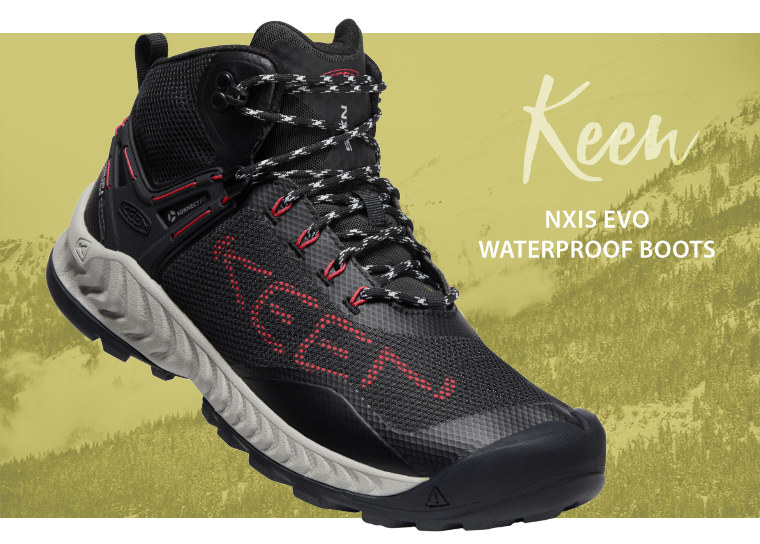

Keen NXIS EVO Waterproof Boots
Weighing a miniscule 836g, the stylish Keen NXIS EVO Waterproof Boots are the second lightest pair of hiking boots on our list, after the Vivobarefoots. They offer supreme levels of comfort that feels more like a trainer or hiking shoe than a boot making them ideal for fast and light hikers who need the extra ankle support not offered by shoes.
They feature a classic Keen bumper, but with a slightly different split toe design that might not be to everyone’s tastes. However, the excellent waterproof membrane makes up for this, providing protection and breathability for three season hiking and scrambling. They’re nimble and bouncy for everyday wear as well as in a variety of outdoor scenarios.
For more information, read our full review of the Keen NXIS EVO Waterproof Boots.
Pros
- Excellent waterproofness
- Very comfortable
- Super lightweight
- Versatile
Cons
- Not great for winter hiking
- Split toe design isn’t for everyone
Find the latest price at:
Keen | REI
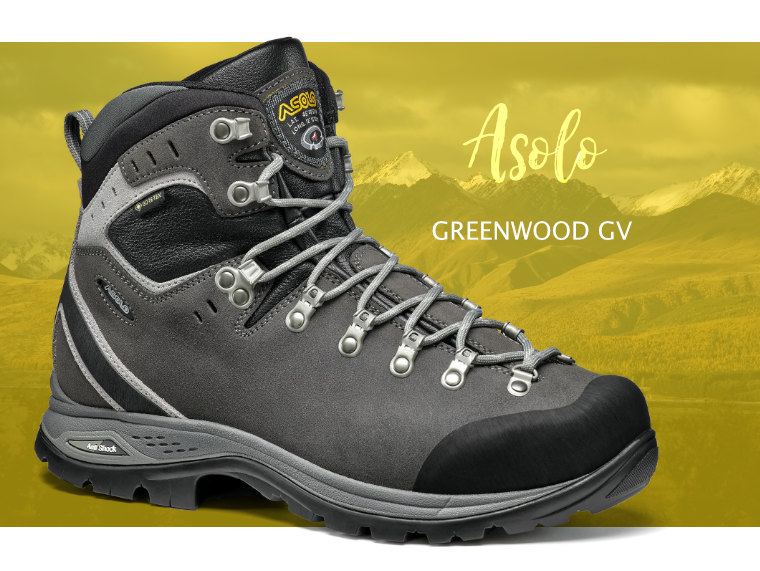

Asolo Greenwood GV Hiking Boots
The Asolo Greenwood GV is one of the more classic-looking boots on our list but still with some modern stying that bridges the gap nicely between the like of the HOKA and the much more tradition AKU. As well as its undeniably good looks, this popular boot also performs rather nicely. It features a very sticky Vibram Megagrip sole that has deep lugs for maximal traction on a variety of terrain, from loose gravel to wet, steep rock. It also has a Gore-Tex lining, and a gusseted tongue to help keep out water and debris. Plus, the solid eyelets stretch the lacing system right down to the toes for a customised fit.
But what really makes this highly stylish men’s hiking boot really stand out is how comfortable it is. The ‘out-of-box’ comfort levels are out if this world making it an excellent option if you don’t have time to break in your boots. The plush cushioning around the ankle and comfortable Lite 2 anatomical footbed both contribute to this as well as making the boots feel very stable on even the most tough terrain. A solid and reliable boot for all seasons, bar hiking in deep snow.
For more information read our full review of the Asolo Greenwood hiking boots.
Pros
- Supportive with good toe protection
- Instantly comfortable
- Waterproof
Cons
- A little on the heavy side
- Pricey
Find the latest price at:
REI
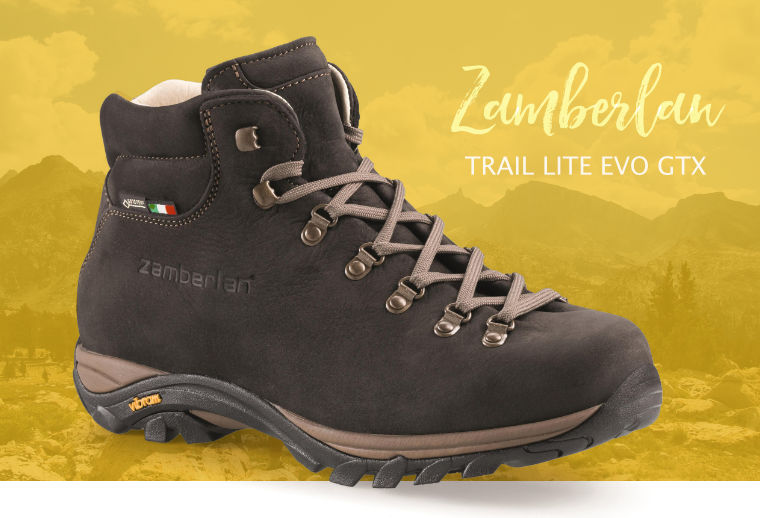
Zamberlan Trail Lite EVO GTX Hiking Boots
Zamberlan Trail Lite EVO GTX Hiking Boots are made to last. These robust hand-crafted Italian hiking boots feature a Gore-Tex lining and a bellows tongue to keep water out. The Vibram soles are grippy and long-lasting, but they’re also flexible and adequately cushioned for day-long comfort.As a mid-high boot, you can expect a decent amount of ankle support, and the ankle is padded for extra protection. The nubuck leather upper looks good and will retain those good looks for many years to come – providing you look after them, of course!
This is a hiking boot that will appeal to traditionalists who also want cutting-edge materials and top-of-the-range performance. However, quality comes at a price, and Zamberlan Trail Lite EVO GTX Hiking Boots are not cheap!
Pros
- Excellent waterproofness
- Vibram sole
- Very lightweight
- Lots of support and cushioning
- Classic styling
- Boots can be resoled
Cons
- Will take some breaking in
- Expensive
- Not suitable for winter hiking
Find the latest price on:
Amazon | REI
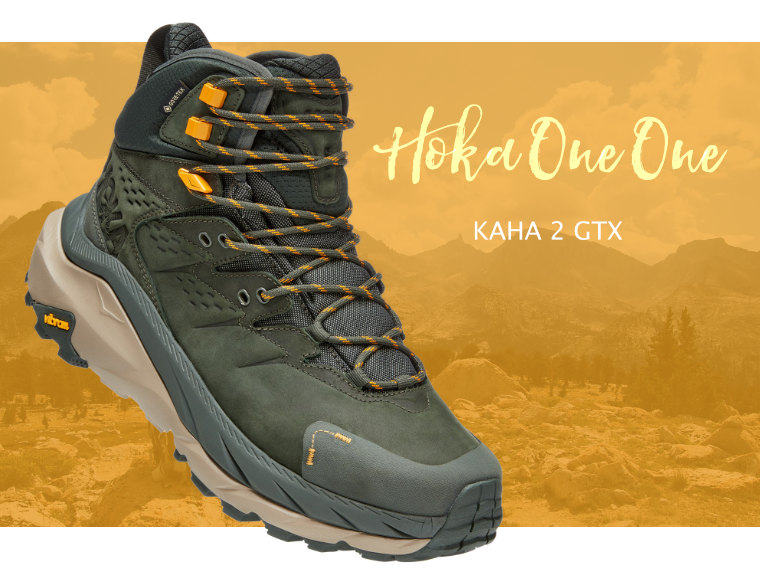
HOKA Kaha 2 GTX Hiking Boots
A lot of hiking boots are heavy and stiff and often take weeks to break in. Straight out-the-box comfort? Forget it! The Kaha 2 GTX Hiking Boots from HOKA buck this trend and are a real alternative to traditional hiking boots.
Lightweight and highly cushioned, the Kaha 2 GTX is basically a high-top trail running shoe. It’s designed for moving quickly over mixed terrain and is perfect for fastpacking. However, this doesn’t mean they lack features, and the Kaha 2 is impressively waterproof and very supportive.
Available in four colours, the Kaha 2 GTX has a very grippy Vibram sole. There is abrasion resistance in all the right places, so these lightweight boots can also handle more challenging terrains.
This is an excellent hiking boot for anyone looking for an alternative to traditional heavy boots but is not quite ready to transition completely to trail running shoes.
Pros
- Excellent waterproofing
- Very lightweight
- Vibram sole
- Very cushioned
- Abrasion-resistant toecap and heels
- Moulded sock liner for a secure fit
- Out-of-the-box comfort
Cons
- Not as supportive or hardwearing as traditional leather hiking boots
- Snug-fitting sock liner means hot feet may be an issue in water climates
Find the latest price on:
Alpine Trek | Amazon | REI
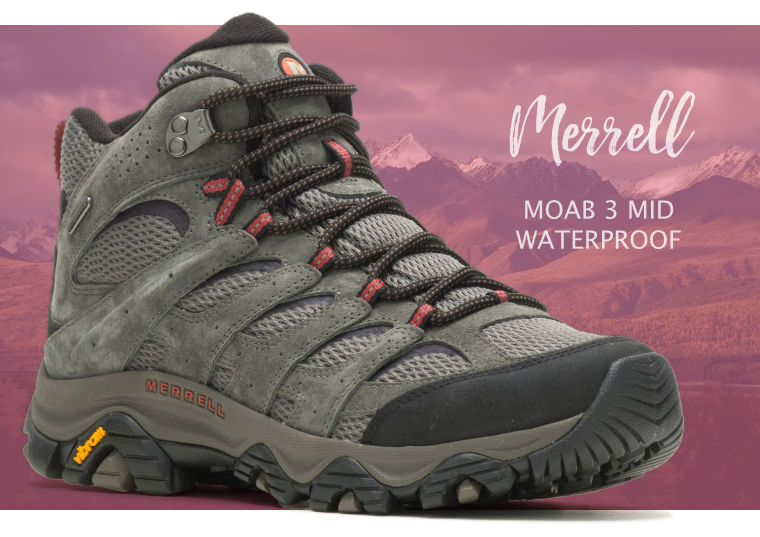
Merrell Moab 3 Mid Waterproof Hiking Boots
Merrell Moabs are a hiking institution. Known for their low price and out-of-the-box comfort, the Mother of All Boots is now in its third generation. Staying true to the original design, the Moab 3 is light and flexible and the perfect day or weekend hiking shoe. The Vibram sole is as non-slippy and hardwearing as ever, and the bellows tongue and Gore-Tex liner provide good protection from the elements.
According to Merrell, the new Moab 3 features upgraded cushioning for an even more comfortable ride, enhanced grip, and more support. The Moab 3 is ideal for anyone looking for a comfortable, lightweight boot that requires no breaking-in. However, it is something of a fair-weather boot and not really suitable for wintery or technical trails.
Pros
Good waterproofing
Excellent value
Out-of-the-box comfort
Vibram sole
Good cushioning and support
Decent grip
Cons
- Can come up a little small/narrow
- Not especially long-lasting
- Lace loops are prone to making a creaking noise!
Find the latest price on:
REI | Amazon
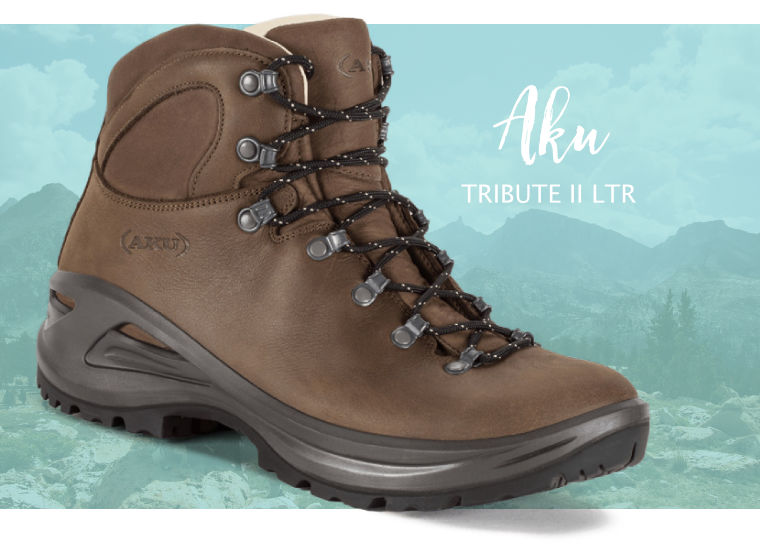
AKU Tribute II LTR Hiking Boots
Despite the popularity of lightweight fabric hiking boots, some people still prefer the traditional look and performance of a full-grain leather boot.
Yes, they take longer to break in, and yes, they require more looking after. Still, the uppers can literally last a lifetime, and the soles can usually be replaced. A leather boot is a boot for life!
These AKU Tribute II LTR hiking boots have a timeless design but also contain modern features that will enhance any walk. There are no Gore-Tex linings to keep your feet dry, so you’ll need to treat these boots to keep the water out. However, this also means they’re more breathable and less prone to overheating. The Vibram sole is deeply lugged to provide lots of grip on slippery surfaces and should give many miles of reliable use.
Made in Italy, these premium leather hiking boots are supportive and cushioned. They will keep your feet happy no matter how hard or long the trail is.
Pros
- Excellent waterproofing
- Hardwearing, grippy sole
- Classic styling
- Supportive, cushioned, moisture-wicking insole
- Thermoplastic mid-foot shank for stability
- Padded ankle with scree collar to keep debris out
- Can be resoled
Cons
- Speed lacing system increases lace breakages
- Quite heavy
- Take some breaking in
Find the latest price on:
REI
Scarpa R-Evolution GTX
A high-performing summer boot which incorporates many ultra-modern features such as the EVA midsole, E Fagus Lite sole and comfort-enhancing ‘Sock Fit’ technology with a classic suede upper and Gore-Tex lining. Weighing in at 1316g per pair, the R-Evolution is a touch heavier than other boots in its price and performance range but offers slightly more stability and a memory-foam heel that molds to the shape of the users foot, while the ‘Sock Fit’ tongue design adds to the overall snugness of the fit. Similar to the Salomon Quest 4D II and Mammut T Advanced GTX (see below) performance-wise, this boot is only a fraction heavier and slightly less comfortable but offers more in terms of overall stability.
Pros
- Memory Foam heel
- Stability – feels like a lightweight alpine boot
- Excellent grip in wet and dry conditions
- Similar to Salomon Quest 4D 2 but offers more stability and only a fraction heavier
- Stretchy Sock Fit design gives snug and comfortable fit
- Lifetime warranty
Cons
- Heavier than competitors
- Cheap and flat insole
Find the latest price on:
Amazon | Backcountry
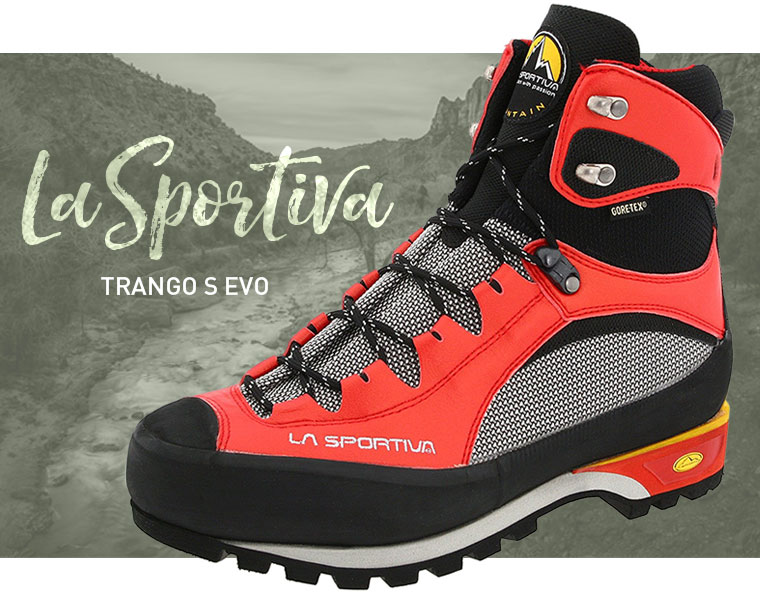
La Sportiva Trango S EVO
A tried and tested all-rounder that has found favour with hikers, scramblers and mountaineers alike since first introduced in 2003, the Trango S EVO is an aesthetically-fetching B2 boot whose most recent incarnation is both lighter and an upgrade performance-wise on earlier models. With all of the features from La Sportiva’s more technical mountain boots – including water repellent uppers, Gore-Tex/nylon lining, Cordura shell and a slightly stiffer Vibram outsole – the Trango S EVO is essentially a very lightweight (1250g per pair) mountaineering, hiking, scrambling and via ferrata hybrid. As such, this boot can do it all and could potentially save you the expense of buying a separate pair for winter or more extreme use…bargain! N.B. The S Evo’s are a tad narrower around the toe and fit slightly smaller than most other boots.
Pros
- Ultra-lightweight for a 3/4 season boot
- Lifetime manufacturer warranty
- Highly breathable
- Good for year-round use, if a little on the under-insulated side for colder winter hikes
- Hybrid crampon compatibility
Cons
- Slightly stiffer than B1 options (a ‘pro’ for some users)
- Questionable durability around the toe area, which tends to fray given frequent use
Find the latest price on:
La Sportiva | Amazon | Backcountry
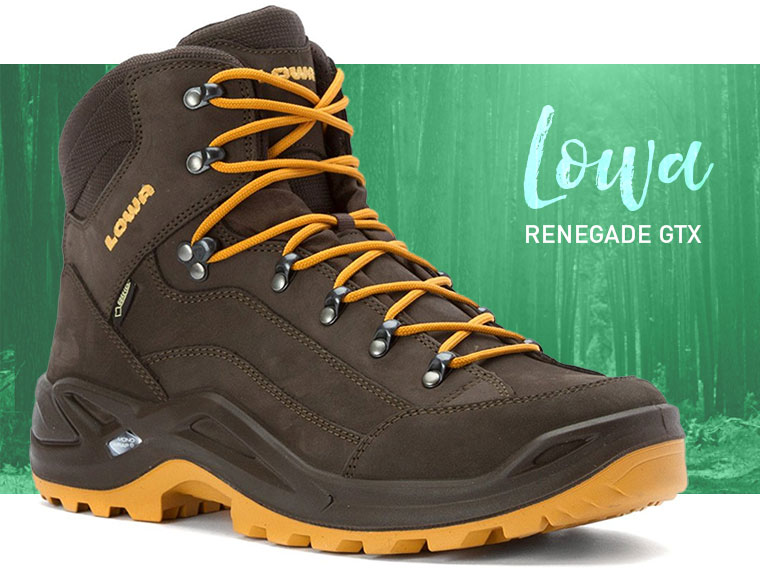
Lowa Renegade GTX
A classy-looking, no-frills workhorse with ample support and a high comfort rating, the Renegade GTXoffers serious competition to the Salomon Quest 4 D 2, Scarpa R-Evolution and Mammut T Advanced GTX for the title of best out-and-out 2/3 season trekking boot. At only 1110g per pair and boasting a Gore-Tex lining, Climate Control footbed, Vibram Evo sole, the Renegade GTX comprises all the essential, high-performing materials of a modern, synthetic boot whilst maintaining a stylish, traditional leather finish with the nubuck upper. If you plan on spending most of your time on trails as opposed to rock, you can’t get much better for your buck (or Pound/Euro/Yen) than these.
Pros
- Durable, waterproof, breathable
- Classy look
- The availability of wider sizes mean this might be the best mid-weight hiking boot for wide feet out there
Cons
- Not ideal for scrambling or use above the snow line
Find the latest price on:
Amazon | REI | Backcountry
Parts of a hiking boot, explained
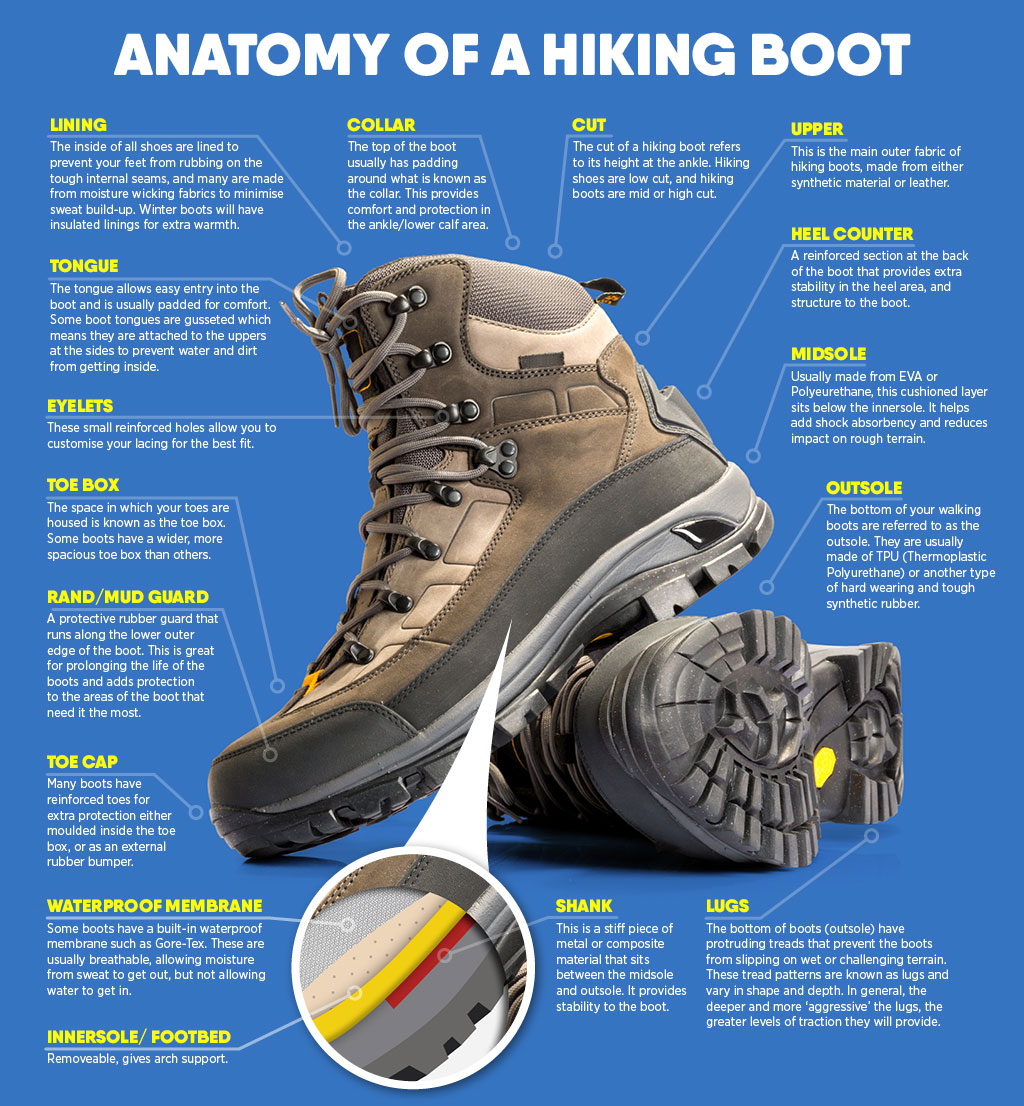
Share this image on your site
What to look for in the best hiking boots for men
When and where you intend on going will ultimately decide the best hiking boot for you. Know thy enemy (or terrain) and thou shalt know thy shoe! While there is still plenty of room for debate and dialogue on what makes the perfect hiking boot for any occasion, there are a few essential considerations applicable to any would-be buyer or user that can help you decide. Let’s start by taking a look at these…
Boot rating
B0 – Lightweight and flexible but lacking in ankle support. Good for gentle coastal, forest or hill walks but not for load-bearing or travelling in uneven, rocky or muddy terrain.
B1 – If you’re unlikely to be using crampons (or only strap-on crampons) and don’t mind being a tad short on ankle support or having a bit of flex in the sole, a lightweight B1 will do the trick. Ideal for 3-season hiking and low-grade scrambling but usually lacking the insulation and stiffness of most B2 boots.
B2 – A good, all-round, one-boot-does-it-all option for hikers heading into higher ground. While B2s vary in terms of ideal use or application, they generally offer a rigid sole, toe-articulation for scrambling, good insulation and articulated crampon compatibility. Choosing a B2 boot is a good option for those who want one boot to use year-round on different terrain, though some stiffer and heavier models will prove to be overly so for simple summertime trail hiking. Those in warmer climates might find the insulation excessive.
B3 – For those of you liable to be spending a lot of time winter hiking or on technical ascents, a B3 boot should be considered. They provide an ultra-stiff sole, extra insulation and compatibility with fully-automatic (step-in) crampons. Not so much a hiking boot as a mountaineering boot, B3-rated boots are designed for high altitude and/or extremes of weather and terrain.
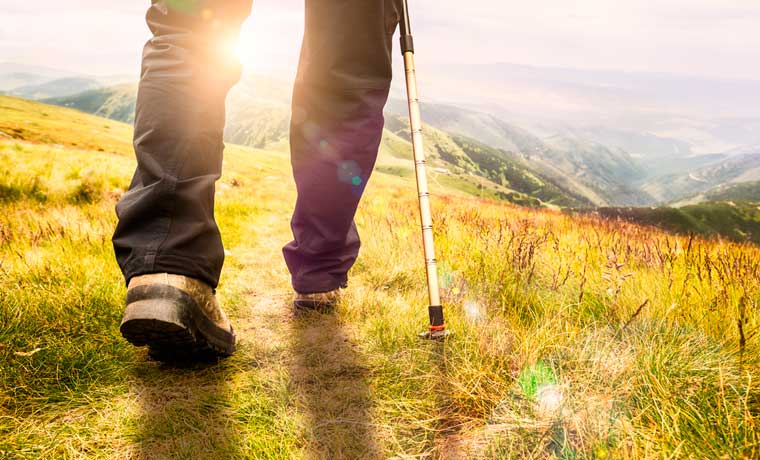
Season rating
Again, your choice will depend largely on your hiking ambitions and interests. A process of elimination is the best way to go about it. Are you likely to be using hiking in especially cold environments, using crampons frequently and looking for one boot to do you year-round? If so, then a 3/4 season boot like the La Sportiva Trango S EVO would be a good option. If not, a 2 or 3-season boot like the Lowa Renegade will be as much as you’re likely to need. If you are only planning on a few spring or summer walks on well-established trails, without any sustained scrambling or climbing, a 2-season boot like the Vivobarefoot will do the job nicely and cut down on weight.
Material and sole
Breathability, durability, ankle support and performance are all key factors contributing to the overall comfort of your boot and the avoidance of such common unpleasantries as blisters, heel spurs, sprains, strains and, of course, the more frequent complaint and blight of knockout odours and puddle-forming sweat. Most manufacturers nowadays use one of a range of optimal materials for soles, but the slightly stickier rubber required for scrambling (such as Vibram and 5.10 or Contagrip) will wear down quickly on tarmac or paved trails, while the harder, more durable soles used on many thru-trekking and backpacking boots might prove a bit slick on rocky scrambles. Another key consideration is the ‘lug’ (tread) pattern. More aggressive lug patterns provide better traction on muddy terrain but tend to be heavier and might be overkill for hiking on well-worn paths.
Width/size
While seeming like a no-brainer, not all boots (or feet!), sadly, are created equal. Although this problem is easily overcome by trying them on before buying, if purchasing online be sure to read the user reviews and specs prior to hitting the checkout. Some boots – like Scarpa, for example – are notorious for being a bit ‘pinchy’ around the toe-box and a size 10 from one manufacturer might not equate width and length-wise to a size ten from another.
Weight
A long day on the trail or hillside can take its toll on your legs, all the more so if you’ve attached to the bottom of them something far heavier than is necessary for the task at hand. Leather options tend to be on the hefty side – reassuring for some – while Goretex or Microfibre options offer something a bit more nimble. The same is true of B2 or 3/4-season rated boots. These heavier options are ideal for colder environments or if your hike is likely to take you to over high, snow-bound passes or peaks, but an unnecessary burden for your leg muscles on less demanding excursions.
We have, indeed, come a long way since the northern Italians started turning out custom-made hiking boots some 120 years ago. We can only imagine how the earliest pioneers of adventure in high places might have got on if they’d had the above range of hiking boots at their disposal…and count our blessings for having them at ours!
We hope this summary has been useful and helps you choose the best hiking boots for your upcoming adventures…happy hiking!
Want to get your gal some new hiking boots too? Check out our review of the best hiking boots for women this year.


